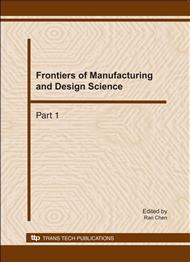[1]
LIU Hui, ZHANG Cai-ming, JI Xiu-hua and ZHANG Yun-feng, An Algorithm for Co-training in Medical Image Retrieval, International Journal of Innovative Computing, Information and Control, Vol. 5(12): 4327-4333, December (2009).
Google Scholar
[2]
L. Hollink, A. Th. Schreiber, B. Wielinga, and M. Worring. Classification of user image descriptions. Journal of Human Computer Studies, November, (2004).
DOI: 10.1016/j.ijhcs.2004.03.002
Google Scholar
[3]
S. Li. Markov random field modeling. Computer Vision. New York: Springer-Verlag, (1995).
Google Scholar
[4]
Y. Jhung, P. H. Swain. Bayesian contextural classification based on modified M-estimates and Markov Random Fields, " IEEE Trans on Pattern Anal. & Machine Intell., 34(1): 67–75, (1996).
DOI: 10.1109/36.481894
Google Scholar
[5]
I. Bloch. Fuzzy Relative Position Between Objects in Image Processing: A Morphological Approach, IEEE Trans on Pattern Anal. & Machine Intell., 21(7): 657-664, (1999).
DOI: 10.1109/34.777378
Google Scholar
[6]
R. Krishnapuram, J.M. Keller, Y. Ma. Quantitative Analysis of Properties and Spatial Relations of Fuzzy Image Regions. IEEE Trans on Fuzzy Systems, 15(3): 222–233, (1993).
DOI: 10.1109/91.236554
Google Scholar
[7]
J.M. Keller, L. Sztandera. Spatial Relations among Fuzzy Subsets of an Image. Int'l Symp. Uncertainty Modeling and Analysis, pp: 207-211, (1990).
DOI: 10.1109/isuma.1990.151251
Google Scholar
[8]
K. Miyajima, A. Ralescu. Analysis of Spatial Relations between 2D Segmented Regions. Proc. European Congress Fuzzy and Intelligent Technologies, pp: 48-54, (1993).
Google Scholar
[9]
J.M. Keller and X. Wang. Learning Spatial Relationships in Computer Vision. Int'l Conf. Fuzzy Systems, pp: 118-124, (1996).
Google Scholar
[10]
P. Matsakis, L. Wendling, J. Desachy. A New Way to Represent Relative Position between Areal Objects. IEEE Trans on Pattern Anal. & Machine Intell., 21(7): 634-643, (1999).
DOI: 10.1109/34.777374
Google Scholar
[11]
K.P. Chan and Y.S. Cheung. Fuzzy-Attribute Graph with Application to Chinese Character Recognition. IEEE Trans on Systems, Man, and Cybernetics, 22(1): 153-160, (1992).
DOI: 10.1109/21.141319
Google Scholar
[12]
T.M. Lehmann, M.O. Güld, C. Thies, B. Plodowski, D. Keysers, B. Ott, H. Schubert, IRMA - Content-based image retrieval in medical applications, in Proc. 14th World Congress on Medical Informatics (Medinfo 2004), IOS Press, Amsterdam, vol. 2, pp.842-848, (2004).
DOI: 10.1055/s-0038-1633877
Google Scholar


